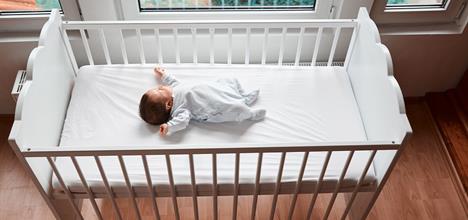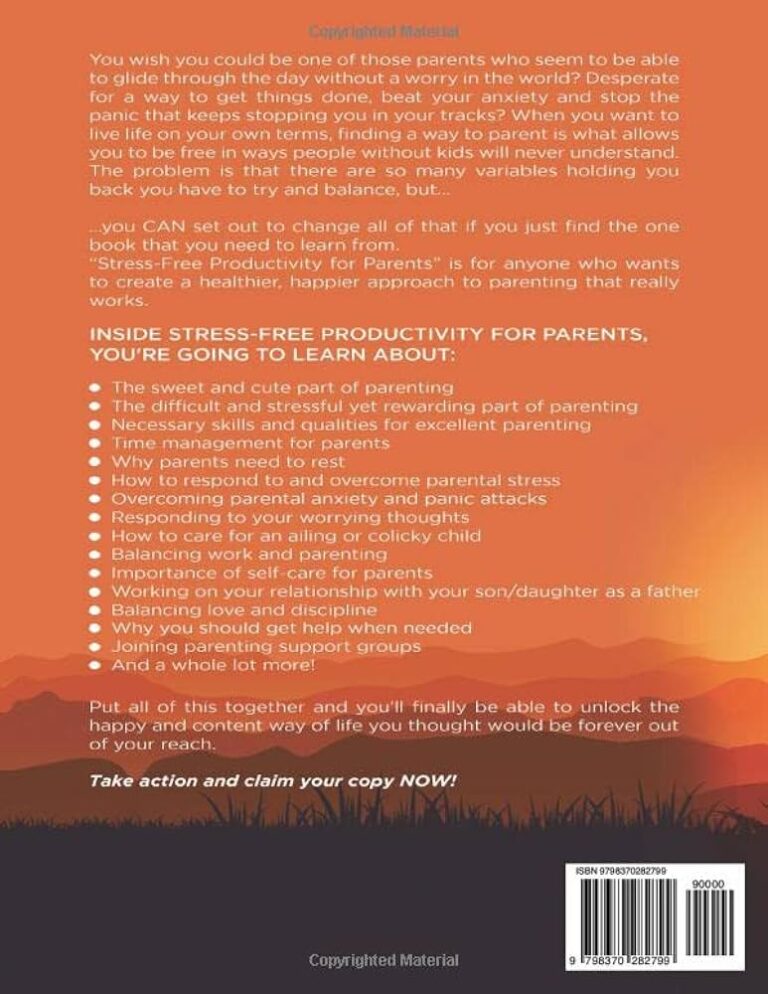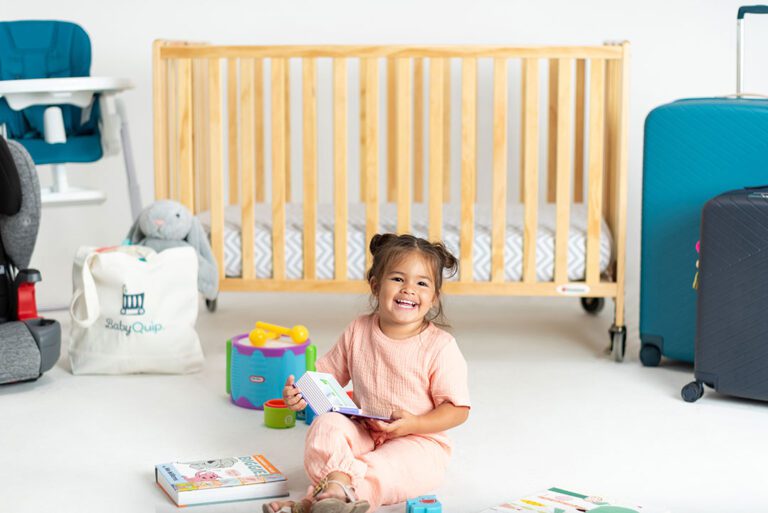How Long Should Baby Sleep in Your Room? A Guide to Safe and Healthy Sleep
Infants should sleep in their parents’ room for at least six months, as recommended by the American Academy of Pediatrics (AAP). This practice helps reduce the risk of Sudden Infant Death Syndrome (SIDS) and provides easier access for feeding and comforting the baby throughout the night.
It is important to create a safe sleep environment for the baby by using a separate bassinet or crib in the parents’ room.

Credit: www.healthline.com
Benefits Of Having Your Baby Sleep In Your Room
There are several benefits to having your baby sleep in your room during the early months of their life. Not only does this arrangement promote bonding between parent and child, but it also provides easier access for nighttime feedings, offers comfort and security for the baby, and reduces the risk of Sudden Infant Death Syndrome (SIDS).
Promotes Bonding Between Parent And Child
Having your baby sleep in your room allows for increased close physical proximity, which promotes a strong bond between parent and child. The presence of the parent’s voice, smell, and touch can provide a sense of security and comfort for the baby, enhancing their emotional well-being. This early bonding experience can have long-lasting positive effects on the parent-child relationship.
Easier Access For Nighttime Feedings
One of the practical advantages of having your baby sleep in your room is the convenience it offers during nighttime feedings. With the baby within arm’s reach, parents can quickly and easily attend to their baby’s feeding needs without the need to navigate through the house or travel to a separate room. This proximity can reduce sleep disruption for both the parent and the baby, making nighttime feedings more efficient and potentially less stressful.
Provides Comfort And Security For The Baby
Sleeping in the same room as their parents provides a sense of comfort and security for the baby. The baby can hear familiar sounds, such as the parent’s breathing or gentle movements, which can help soothe them back to sleep if they wake up during the night. This closeness can also alleviate any separation anxiety the baby may feel, promoting better sleep patterns and overall well-being.
Reduces The Risk Of Sudden Infant Death Syndrome (sids)
The American Academy of Pediatrics (AAP) recommends that infants sleep in their parents’ room for at least six months as a way to reduce the risk of Sudden Infant Death Syndrome (SIDS). Having the baby sleep in the same room, but not in the same bed, allows parents to monitor their baby’s breathing and sleep patterns more easily. This close supervision can help reduce the risk of SIDS and ensure a safer sleep environment for the baby.
Recommended Duration For Room Sharing
The American Academy of Pediatrics recommends that infants sleep in their parents’ room for at least six months for safe sleep and to reduce the risk of Sudden Infant Death Syndrome (SIDS).
The American Academy Of Pediatrics Recommends Room Sharing For At Least The First Six Months
According to the American Academy of Pediatrics (AAP), it is recommended that infants sleep in their parents’ room for at least the first six months. This practice not only fosters a closer bond between the baby and the parents but also provides a safe environment for the baby to sleep. Keeping your baby in your room for the first six months allows you to closely monitor their breathing and reduces the risk of sudden infant death syndrome (SIDS). It helps ensure that any potential sleeping disturbances or emergencies can be quickly addressed.
Research Suggests That Room Sharing Up To One Year May Have Additional Benefits
Recent research indicates that extending the duration of room sharing beyond six months may have additional benefits for both the baby and the parents. Studies have shown that room sharing up to one year may contribute to better sleep patterns for the baby, as they feel more secure and comforted by the presence of their parents. It also gives parents the opportunity to respond promptly to their baby’s needs during the night, enhancing their overall well-being and reducing the chances of sleep disturbances.
Additionally, room sharing for an extended period allows parents to closely observe and learn their baby’s sleep cues, helping them establish healthy sleep habits. The continued proximity also facilitates breastfeeding and promotes a stronger parent-child bond.
While there is no strict rule for how long babies should sleep in the same room as their parents, the AAP’s recommendation for at least the first six months provides a solid guideline. Ultimately, it is important to consider what works best for your family dynamics and to ensure that the baby’s safety and sleep needs are prioritized. Consult with your pediatrician for personalized advice based on your specific circumstances.
Creating A Safe Sleep Environment In Your Room
To create a safe sleep environment in your room, it is recommended by the American Academy of Pediatrics that infants sleep in their parents’ room for at least six months. This helps reduce the risk of SIDS and ensures the baby is within reach for feeding and comfort during the night.
Choose A Suitable Crib, Bassinet, Or Co-sleeper For Your Baby
When it comes to creating a safe sleep environment in your room for your baby, the first step is to choose a suitable crib, bassinet, or co-sleeper. Here are some key considerations to keep in mind:
- Ensure the crib, bassinet, or co-sleeper meets current safety standards.
- Choose a sleep surface with sturdy construction and no loose parts.
- Make sure the sleep surface is free from any potential choking hazards.
- Check that the mattress fits snugly and does not leave any gaps.
Ensure Proper Positioning And Firmness Of The Sleep Surface
An important aspect of creating a safe sleep environment is ensuring proper positioning and firmness of the sleep surface. Follow these guidelines:
- Place the crib, bassinet, or co-sleeper in a location away from windows, cords, and blinds.
- Make sure the sleep surface is firm, as soft surfaces increase the risk of suffocation.
- Position your baby on their back for sleep, as recommended by the American Academy of Pediatrics (AAP).
Maintain A Temperature And Humidity Level Conducive To Sleep
Another important factor in creating a safe sleep environment is maintaining a suitable temperature and humidity level. Here’s what you need to know:
- Keep the room temperature between 68-72°F (20-22°C) to prevent overheating.
- Use a room thermometer to monitor the temperature and ensure it remains within the recommended range.
- Ensure proper ventilation in the room to maintain fresh air circulation.
- Avoid placing your baby’s sleep area near a draft or direct airflow.
Keep The Room Dark, Quiet, And Free From Potential Hazards
In order to promote a peaceful and safe sleep environment, it’s important to keep the room dark, quiet, and free from potential hazards. Take these steps:
- Use blackout curtains or shades to block out any excess light that may disrupt your baby’s sleep.
- Keep noise levels in the room to a minimum during your baby’s sleep time.
- Remove any potential hazards such as loose cords, pillows, blankets, or toys from the crib or sleep area.
- Ensure that electrical outlets are covered and cords are safely tucked away.
By following these guidelines and creating a safe sleep environment in your room, you can provide your baby with the optimal conditions for a restful and secure sleep.
Signs It May Be Time To Transition Your Baby To Their Own Room
It may be time to transition your baby to their own room when they reach the recommended age of at least six months, according to the American Academy of Pediatrics. This helps establish healthy sleep habits and allows for more independent sleep.
Your Baby Is Consistently Sleeping Through The Night
One of the signs that your baby may be ready to transition to their own room is when they consistently sleep through the night. When they no longer require nighttime feedings and can sleep for longer stretches without waking up, it may be an indication that they are ready for more independence in their sleep space.
They Can Self-soothe And Fall Asleep Independently
Another sign that your baby may be ready for their own room is if they can self-soothe and fall asleep independently. If your baby can settle themselves to sleep without needing you to rock, feed, or hold them, it shows that they have developed the ability to self-soothe. This is an important milestone and can indicate that they are ready for the transition to their own sleep space.
Space Limitations Or Privacy Concerns Arise
As your baby grows, you may find that space limitations or privacy concerns arise, making it necessary to transition your baby to their own room. If you live in a small apartment or have limited space in your bedroom, moving your baby to their own room can create a more comfortable and private sleep environment for both you and your baby.
Your Baby Is Showing Signs Of Readiness For A Separate Sleep Space
Finally, it’s important to pay attention to your baby’s individual cues and signs of readiness for a separate sleep space. Every baby is different, and some may show signs of readiness earlier than others. If your baby starts showing more independence during playtime, develops a strong preference for their own space, or demonstrates increased ability to self-soothe, it may be a good time to consider transitioning them to their own room.
Tips For A Successful Transition To Their Own Room
Transitioning your baby to their own room can be a significant milestone for both you and your little one. While it can be a bittersweet moment, it is essential to ensure a smooth and successful transition. Here are some tips to help make the process easier:
Gradually Introduce The New Sleep Environment
Moving your baby to their own room doesn’t have to happen overnight. Gradually introducing the new sleep environment can help ease the transition. Start by spending some playtime in their room during the day, allowing them to become familiar with the space. Over time, increase the duration of their naps in their own room until they are comfortable sleeping there overnight. This gradual approach can help them feel more secure and adjust to the new surroundings.
Establish A Consistent Bedtime Routine
A consistent bedtime routine is crucial for promoting healthy sleep habits and creating a sense of security for your baby. Implementing a regular routine can signal to them that it’s time to wind down and prepare for sleep. Include activities such as a warm bath, reading a bedtime story, or singing a lullaby. Consistency is key, so try to follow the same routine every night. This predictability will help your baby understand that it’s time to sleep, regardless of where they are sleeping.
Use Comforting Objects Or Familiar Sounds To Create A Sense Of Security
Transitioning to their own room can sometimes make babies feel a little anxious or unsettled. To create a sense of security, consider using comforting objects or familiar sounds. This could be a favorite stuffed animal, a cozy blanket, or a white noise machine that mimics the sounds they heard in your room. These familiar items can provide a sense of comfort and familiarity, making the transition smoother for your little one. Just be sure to follow safe sleep guidelines and avoid any objects that could pose a suffocation hazard.
Monitor Your Baby’s Adjustment And Provide Reassurance As Needed
During the transition period, it’s essential to monitor your baby’s adjustment and provide reassurance as needed. Every baby is different, and there may be some resistance or difficulty adapting to the new sleeping arrangement. Be patient and understanding as they navigate this change. If they wake up during the night and seem unsettled, offer gentle reassurance by patting them or soothing them back to sleep. Your presence and reassurance will help them feel secure and confident in their new sleep environment.
Transitioning your baby to their own room is a significant milestone that requires thoughtfulness and patience. By gradually introducing the new sleep environment, establishing a consistent bedtime routine, using comforting objects or familiar sounds, and monitoring your baby’s adjustment with reassurance, you can help make the transition a successful and positive experience for both you and your little one.
Frequently Asked Questions For How Long Should Baby Sleep In Your Room
When Should You Move A Baby Out Of Your Room?
The American Academy of Pediatrics recommends that babies sleep in their parents’ room for at least six months.
When Should I Stop Sleeping In My Baby’s Room?
According to the American Academy of Pediatrics, it is recommended that babies sleep in their parents’ room for at least six months.
How Long Until A Baby Needs Its Own Room?
According to the American Academy of Pediatrics, babies should sleep in their parents’ room for at least six months.
What Age Do Babies Stop Sleeping In Parents Room?
Babies should sleep in their parents’ room for at least six months, according to the American Academy of Pediatrics.
Conclusion
It is recommended by the American Academy of Pediatrics (AAP) that infants sleep in their parents’ room for at least six months. This practice helps reduce the risk of sudden infant death syndrome (SIDS) and allows for easy monitoring and comforting during the night.
While the specific age to transition a baby to their own room may vary, keeping them close for the first six months is crucial for their safety and well-being. Remember to create a safe sleeping environment, such as using a bassinet, and follow AAP guidelines for optimal sleep arrangements.








